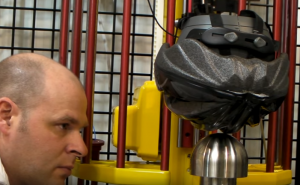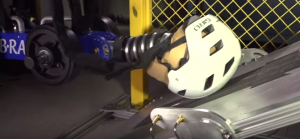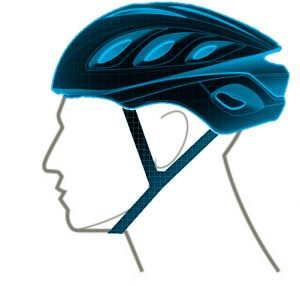by John Brown, HaveFunBiking,com
When you were a kid, wearing a bicycle helmet was probably something you tried not to do. They were heavy, hot, and never fit well. Now you’re older, wearing a helmet isn’t just a logical safety choice, but it is also very comfortable. Read on to learn how helmets protect you better, have become lighter, fit better, and are more comfortable than ever before.
Ensuring a Bicycle Helmet’s Impact Protection
Any bicycle helmet sold in the US must pass the same 4 CPSC tests to be sold legally (3 impact 1 roll off). Each of the 4 tests are completed in cold, warm, hot and wet conditions. The varying conditions ensure that the helmet will still do its job regardless of the environment.
New Focus on Rotational Forces
Some manufacturers are also incorporating testing that exceeds what is legally required. These helmets use what is called MIPS (Multi-directional impact protection system), which helps the helmet protect against both impact and rotational forces. The theory goes that while experiencing a sudden bicycle dismount, you could be experiencing rotational forces. Any sudden stop to these rotational forces (impact with the ground) could stop your body but allow momentum to continue rotating your brain and cause damage. MIPS helmets isolate the outer shell of a helmet from the inner portion. This isolation allows the outer shell to absorb rotational forces during impact. Most helmet brands now offer products with MIPS and without.
The Right Fit
Comfort
The biggest concern with purchasing a new bicycle helmet is comfort. You’re more likely to wear one if it’s comfortable, so be sure and test out different brands to find the right one. It should feel snug around your head without any lateral movement, and should not have any individual points of pressure.
Retention
Different helmets will have different ways of being retained on your head. Some low-cost models will use a one size fits all retention device (it works a lot like the dial sizing of a hard hat). The more expensive models usually have multiple sizes and retention devices that can be adjusted for diameter and height. The size specific helmets are usually more comfortable. In all cases, the helmets pads and retention device do a great job absorbing and managing perspiration, keeping you more comfortable.
Ventilation
Ventilation of helmets vary greatly. A more complicated production method is required to get larger vents and better ventilation (cooler) while maintaining impact protection. The more ventilated a bicycle helmet is, the more expensive it becomes. With each passing year, helmet manufacturers are bringing the cost of high ventilation down, so If you are replacing a 4 year old helmet, chances are the new one will allow more airflow.
A helmet’s weight is also important for overall comfort. The most comfortable models will often time be the lightest. What you give up with that light weight is durability. It is not uncommon for commuters and casual riders to pick heavier helmets with hard plastic covers over lightweight mostly foam versions. The added weight of a hard plastic shell helps protect the helmet from impact. It’s important to understand that that shell doesn’t make the helmet any safer, but it will be more durable when knocking around the trunk of your car, or hanging off your backpack while in transit.
Adjusting Your Helmet
Once you have picked the best fitting model take a few minutes to dial in the fit.
Retention
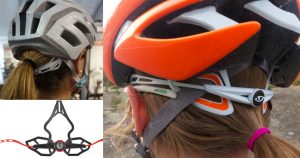
Retention in action!
Start by placing the helmet on your head so it is level. Adjust the retention mechanism (in the back) so the helmet is snug on your head (you should be able to lightly shake your head without the helmet falling off or shifting). If the retention mechanism sits too low for your head (or hair) to be comfortable, look inside the helmet to adjust the retention up if possible.
Straps
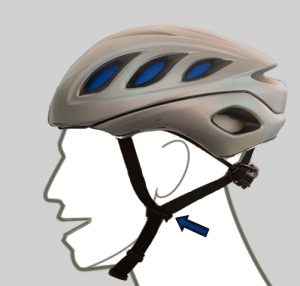
Having the toggles below the ears, buckle tight, and still being able to speak comfortably means that your helmet is adjusted properly
In tandem with the retention device, the straps hold your helmet in place. Start by adjusting the side toggles on the straps so they sit just below your earlobes. Once the toggles are in place, tighten the buckle enough so it can’t be pulled past your chin when closed. Be sure to not make the straps so tight that they choke you when you open your mouth.
Lifespan
All bicycle helmets will have a production date on the inside. Pay attention to that date, because most manufacturers recommend you replace the helmet every 3 to 5 years after production. With time, the padding and foam inside a helmet can degrade, leaving it unable to absorb impacts adequately.
Follow the above tips and you’ll find the kind of head protection you need. You’ll be on your way to a safer, more enjoyable ride.

